Setup Guide
You can find your Salesforce app credentials in your Salesforce Developer Account. You’ll need the following information to set up your Salesforce App with Paragon Connect:- Consumer Key
- Consumer Secret
- Scopes Requested
Add the Redirect URL to your Salesforce app
Paragon provides a redirect URL to send information to your app. To add the redirect URL to your Salesforce app:- Log in to your Salesforce dashboard.
- Navigate to the gear icon at the top of the page and click Setup.
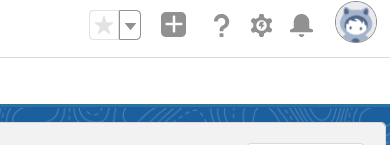
- In the left-hand sidebar, go to Platform Tools > Apps > App Manager.
Note: You must have the proper admin permissions on your Salesforce account to access the App Manager. If you don’t, please speak to your admin.
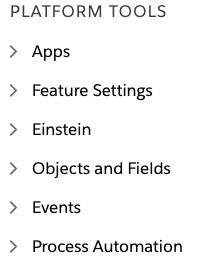
- Click on the registered application you’d like to use. If you don’t already have one, click New Connected App.
- Under API (Enable OAuth Settings), mark the “Enable OAuth Settings” checkbox.
- Under Callback URL, paste-in Paragon Connect’s redirect URL:
- Select any scopes you’d like to use in your application.
- Disable “Require Proof Key for Code Exchange (PKCE)” if it is enabled in your Salesforce Connected App.
- Press the Save button at the bottom of the page.

Add your Salesforce app to Paragon
Under Integrations > Connected Integrations > Salesforce > Settings, fill out your credentials from the end of Step 1 in their respective sections:- Consumer Key: Found under Manage Connected Apps > API (Enable OAuth Settings) > Consumer Key on your Salesforce App page.
- Consumer Secret: Found under Manage Connected Apps > API (Enable OAuth Settings) > Consumer Secret on your Salesforce App page.
- Permissions: Select the scopes you’ve requested for your application. For a list of recommended scopes, please view this integration within your Paragon dashboard. View dashboard.
Note: Leaving the Client ID and Client Secret blank will use Paragon development keys.

Connecting to Salesforce
Note: Salesforce API access is limited to Enterprise, Unlimited, and Performance Editions of Salesforce, as well as Professional Editions with the paid API add-on. See Salesforce documentation for more information.
Building Salesforce workflows
Once your Salesforce account is connected, you can add steps to perform the following actions:- Create Record
- Update Record
- Get Record by ID
- Search Records
- Search Records by SOQL Query
- Deploy Custom Field
- Deploy Custom Object
- Get Records by List View
{{ to invoke the variable menu.
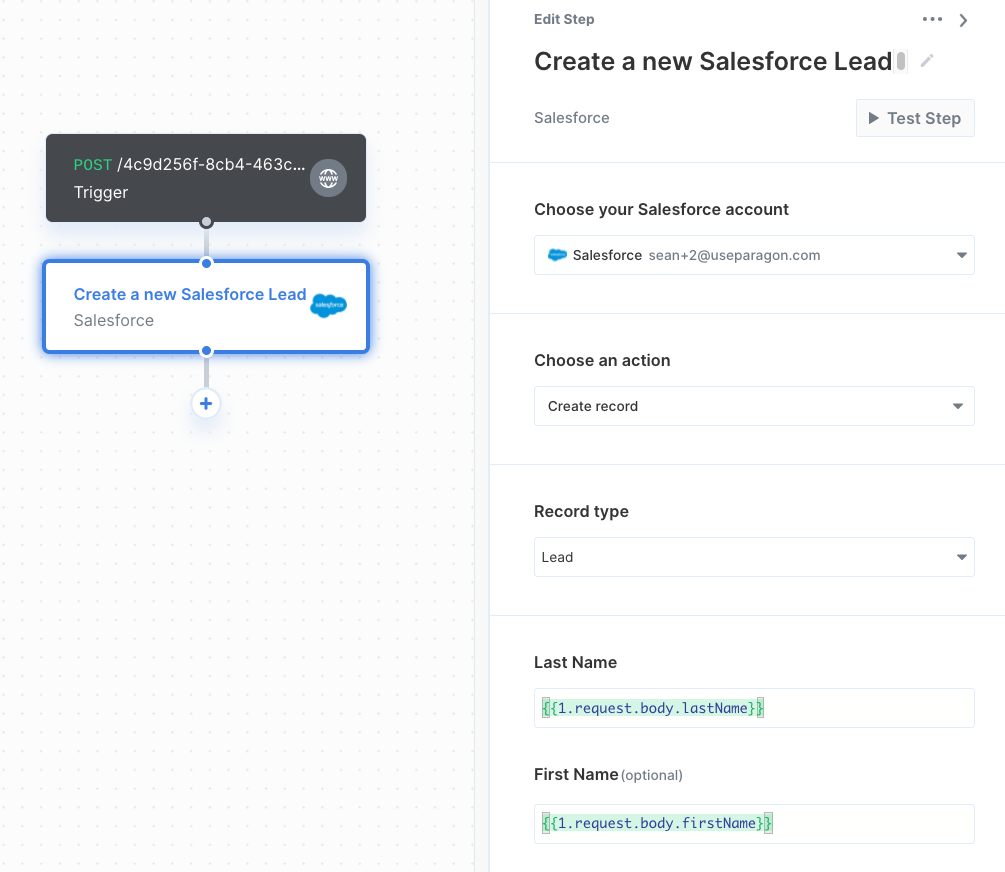
Working with Salesforce Custom Objects and Custom Fields
It’s common that different Salesforce instances may be configured with different Custom Objects or Custom Fields. Paragon provides the ability for your users to choose their own Custom Object mapping. You can also deploy Custom Objects or Custom Fields that may be specific to your application to your users’ Salesforce instances.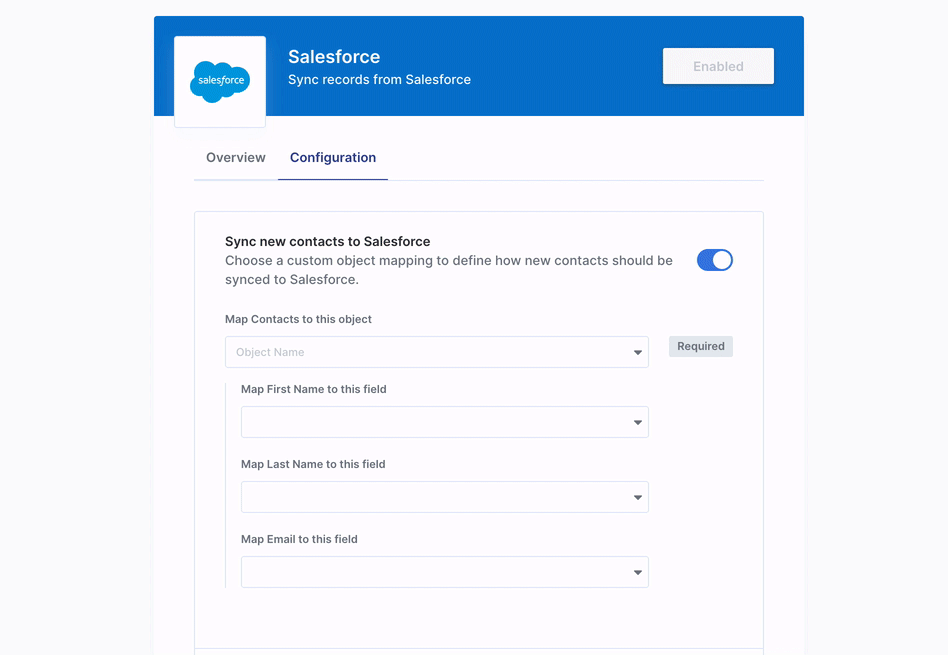
Custom Object Mapping
To allow your users to choose their own Custom Object Mapping, add the Custom Object Mapping user setting in your Connect Portal Editor. You should give this setting a descriptive user-setting name, for example, if you’re mapping contacts from your app to Salesforce, you might call this “Map Contacts to this object”.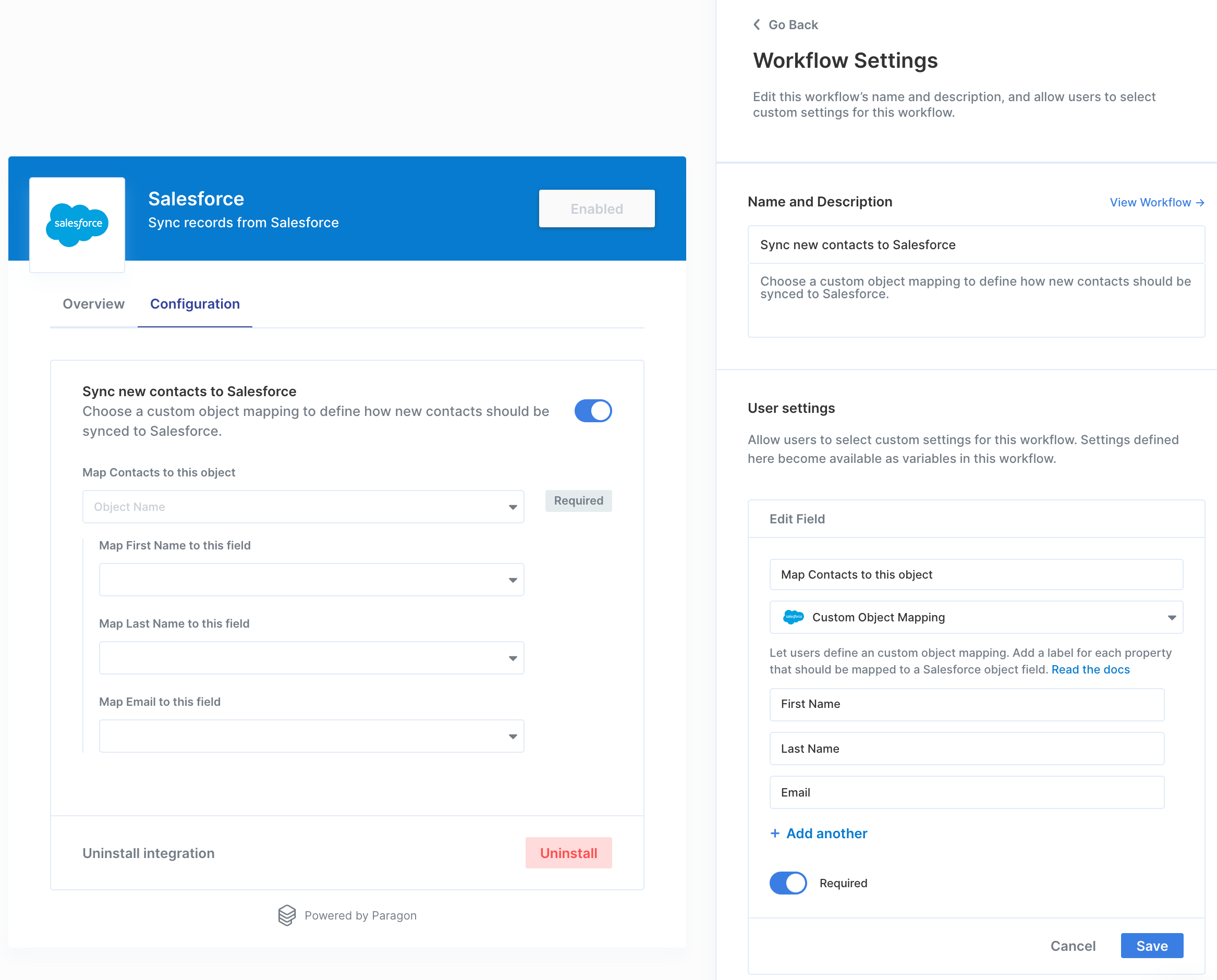
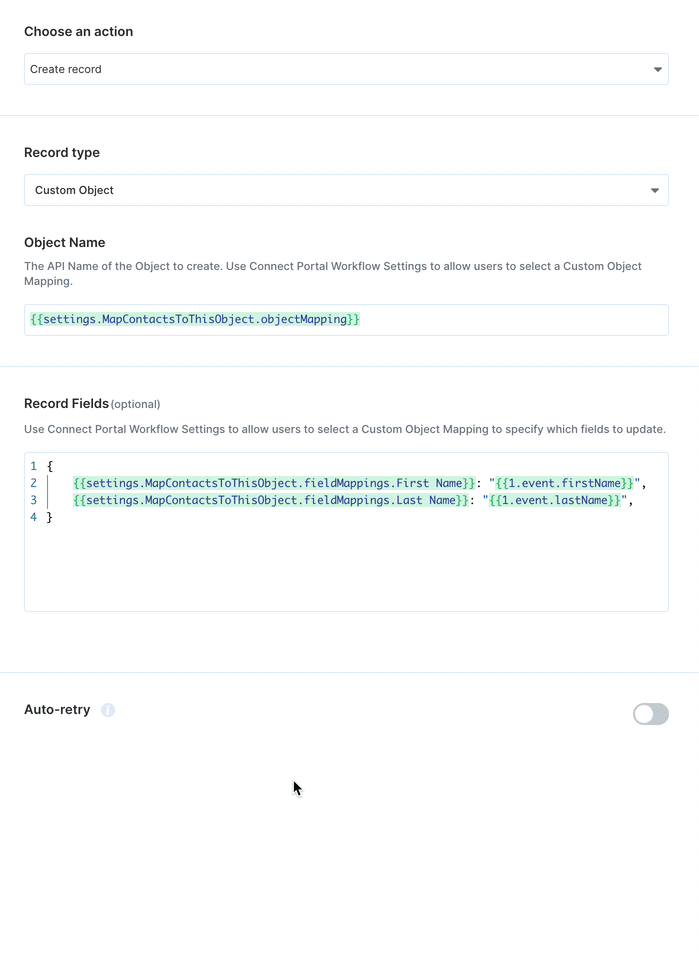
Deploying Custom Objects or Custom Fields
To deploy Custom Objects or Custom Fields to your users’ Salesforce instances, use the Deploy Custom Object or Deploy Custom Field Salesforce workflow actions. Both Deploy Custom Object and Deploy Custom Field will upsert by default, for example, if you run Deploy Custom Field on an existing Custom Field, it will apply any relevant updates to the Custom Field.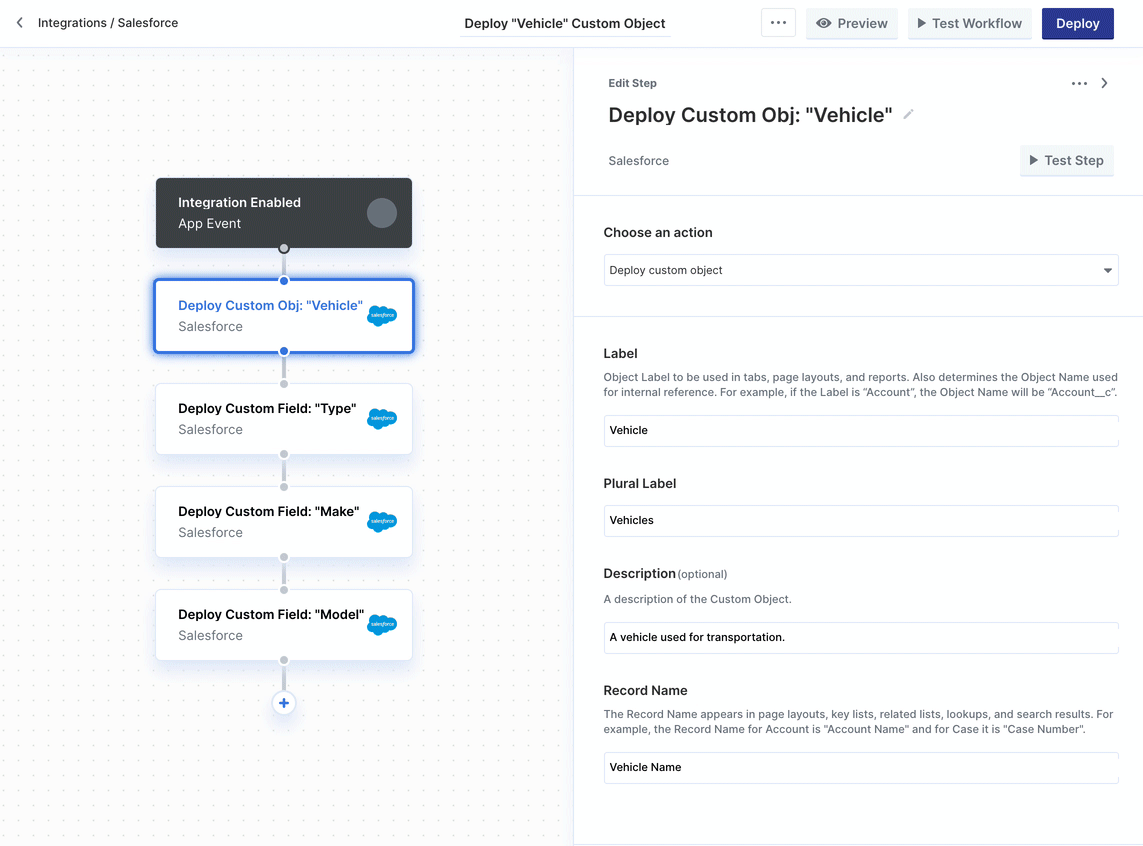
Referencing Custom Objects and Fields
You can reference any Salesforce object (provided that the object exists in your user’s Salesforce instance) when creating, updating, or searching records by selecting Custom Object under Record Type and referencing the Object Name. Similarly, you can reference any Salesforce field (provided that the field exists on the target object) when creating or updating records. The Object Name for Custom Objects and the Field Name for Custom Fields are both suffixed with__c.
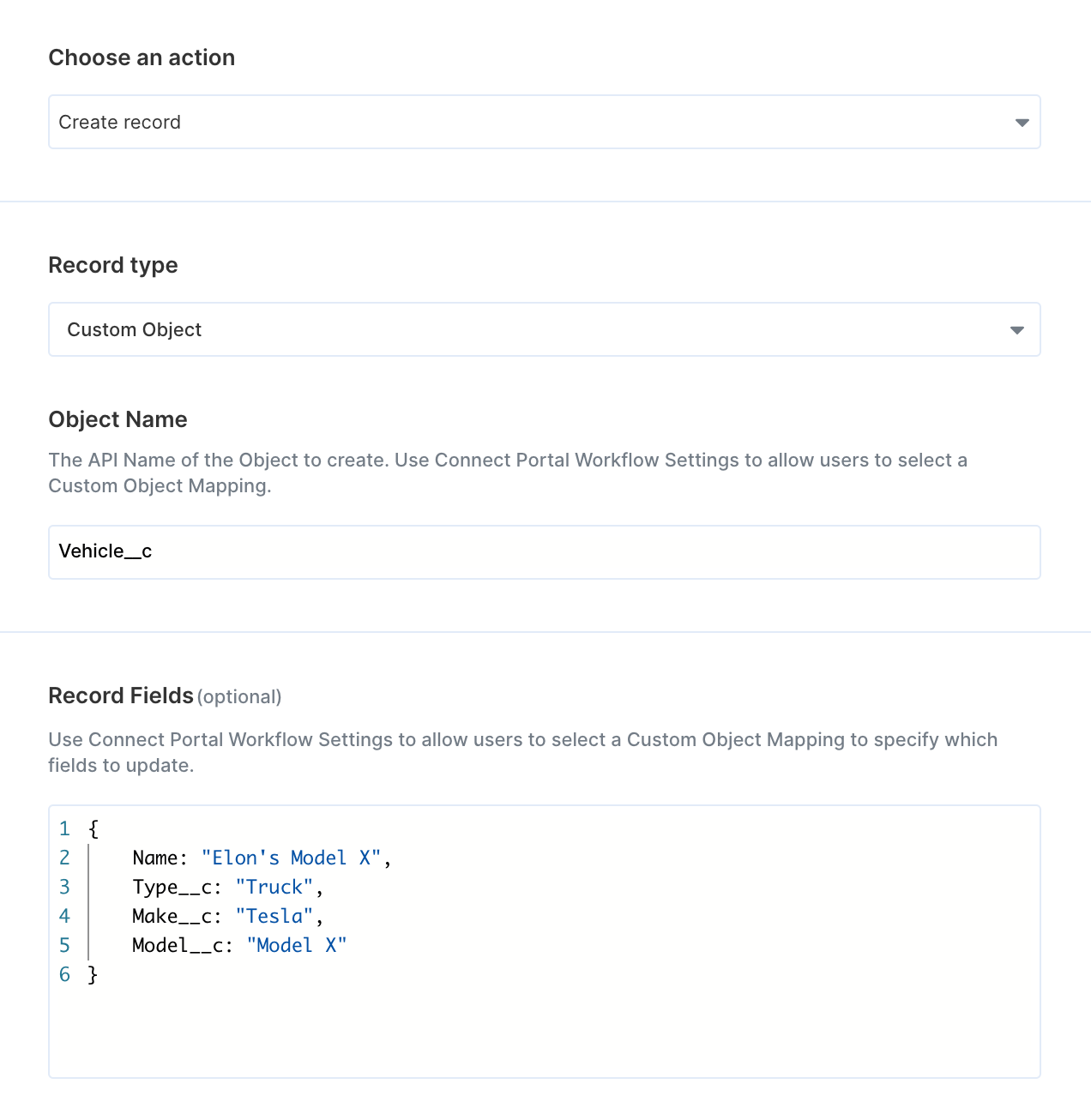
Using Webhook Triggers
Webhook triggers can be used to run workflows based on events in your users’ Salesforce account. For example, you might want to trigger a workflow whenever new contacts are created in Salesforce to sync your users’ Salesforce contacts to your application in real-time.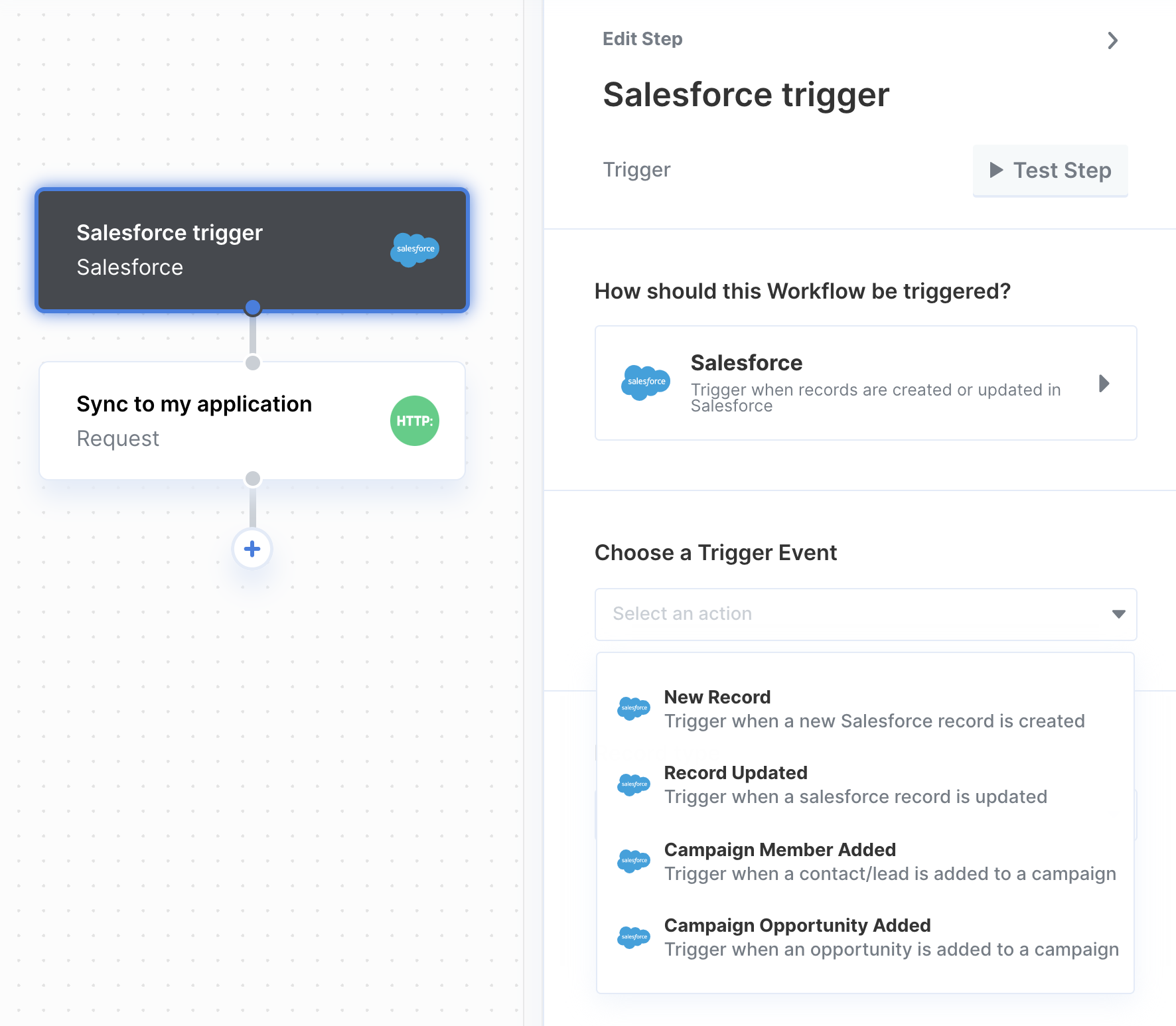
- New Record
- Record Deleted
- Record Updated
- Campaign Member Added
- Campaign Opportunity Added